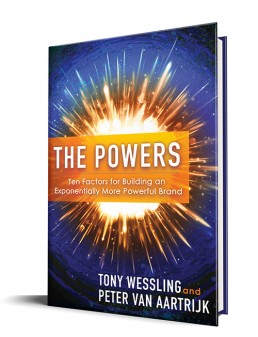As we lurch toward the end of two decades of careers in what is loosely called the “marketing communications” industry, we’ve found that while we know a tremendous amount about how strong brands are built and maintained, there is still something inexplicable, something magical, about successful brands. They’re just so good at what they do, and they always seem to be in tune with the Zeitgeist. Like any good story, the possibility for tragedy could also lurk just around the corner for these brands; the Apple or Facebook of today could quite possibly join such former war horses as Kodak, Pontiac, Yahoo!, Blackberry, AOL, Sony, and Lehman Brothers (just to name a few) in either the also-ran category or the glue factory of commercial history.
In the end, the story of a brand is a very human story of birth, life’s achievements, and, eventually, death. Perhaps that’s why we find brands so compelling.
We define “brand” as a network of experiences woven together to form a persistent, singular concept. It’s like the delicate senses of a spider’s web: Every intersection on the web is a memory—a sight, sound, smell, taste, touch, or feeling that is associated with a particular brand. When woven together, a touch on any part of that web is transmitted across the network, and the concept of the brand instantly pops out, like the spider that senses when a bug has been ensnared. When well managed, the brand can become the most important asset your company owns.
Furthermore, we categorize brands in one of two ways: “Quo Brands” and “Innovator Brands.” Quo Brands are led by individuals who are resistant to change or simply don’t understand that they need to change. They talk about the “good old days,” decline to invest in brand and culture strategy, don’t offer prospective employees a good reason to want to work there, see revenue slipping or become stagnant, and so on. It’s malaise and milquetoast. These are firms who may be among the walking dead, but may not realize it yet.
Innovator Brands are the opposite: vibrant, growing, and exciting places to work because their authentic and shared core values guide employee behavior. They encourage risk-taking to learn new ways to develop and market things. They attract new customers. They have raving fans. They can command premium pricing. They’re market leaders, or on their way to leading. We could go on about how we feel about Innovators, but we’ll stop there.
Finally, a word about the title and structure of this book. Unlike mathematical Powers of Ten, the Powers that we ascribe to branding do not get more powerful in a linear progression. The Power of One is equally as potent as the Power of Seven. But taken together, they will make your brand significantly more powerful than it was before. Master another Power, and you’ve got a hundred times the mojo. Find your brand afflicted by the negative consequences associated with the Power of Eight, and you’ll see it greatly diminished. We start with ten and end with one, giving the whole thing a kind of countdown feel, and when you get to the Power of One, you’ll see how the whole complex process really distills down into a single, unifying, and yes, powerful concept.
We’re looking forward to seeing The Powers help your organization find its true strategic North Star—and along the way an exciting brand and a vibrant culture.
—Tony Wessling and Peter van Aartrijk
San Francisco, CA and Washington, DC
